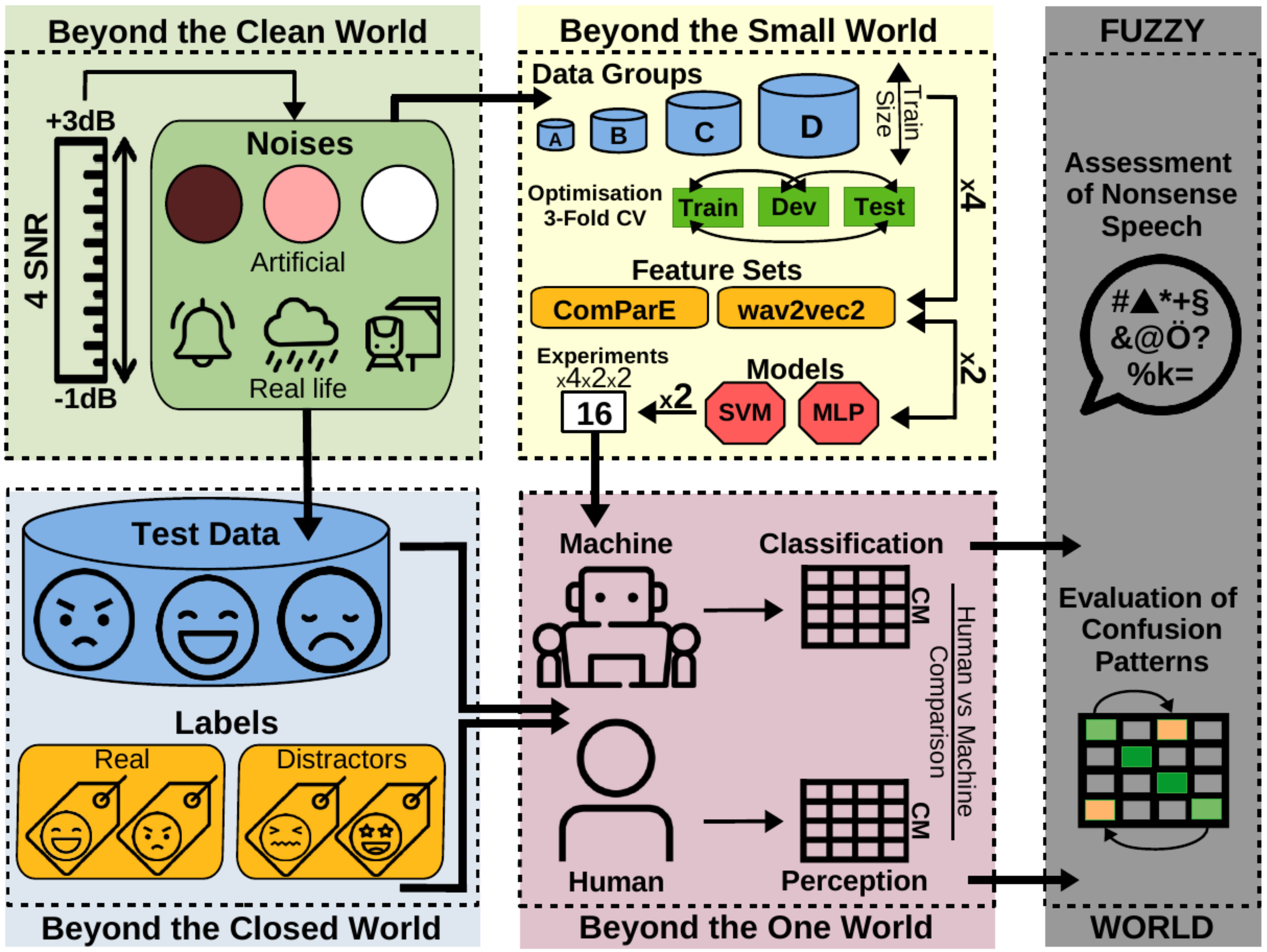
Abstract
This article contributes to a more adequate modelling of emotions encoded in speech, by addressing four fallacies prevalent in traditional affective computing: First, studies concentrate on few emotions and disregard all other ones (‘closed world’). Second, studies use clean (lab) data or real-life ones but do not compare clean and noisy data in a comparable setting (‘clean world’). Third, machine learning approaches need large amounts of data; however, their performance has not yet been assessed by systematically comparing different approaches and different sizes of databases (‘small world’). Fourth, although human annotations of emotion constitute the basis for automatic classification, human perception and machine classification have not yet been compared on a strict basis (‘one world’). Finally, we deal with the intrinsic ambiguities of emotions by interpreting the confusions between categories (‘fuzzy world’). We use acted nonsense speech from the GEMEP corpus, emotional ‘distractors’ as categories not entailed in the test set, real-life noises that mask the clear recordings, and different sizes of the training set for machine learning. We show that machine learning based on state-of-the-art feature representations (Wav2vec2) is able to mirror the main emotional categories (‘pillars’) present in perceptual emotional constellations even in degradated acoustic conditions.
Citation
Emilia
Parada-Cabaleiro,
Anton Batliner,
Maximilian Schmitt,
Markus
Schedl,
Giovanni Costantini,
Björn Schuller
Perception and classification of emotions in nonsense speech: Humans versus machines
PLOS ONE,
18(1): 2023.
BibTeX
@article{Parada-Cabaleiro2023HumanVSMachine,
title = {Perception and classification of emotions in nonsense speech: Humans versus machines},
author = {Parada-Cabaleiro, Emilia and Batliner, Anton and Schmitt, Maximilian and Schedl, Markus and Costantini, Giovanni and Schuller, Björn},
journal = {PLOS ONE},
volume = {18},
number = {1},
year = {2023}
}
